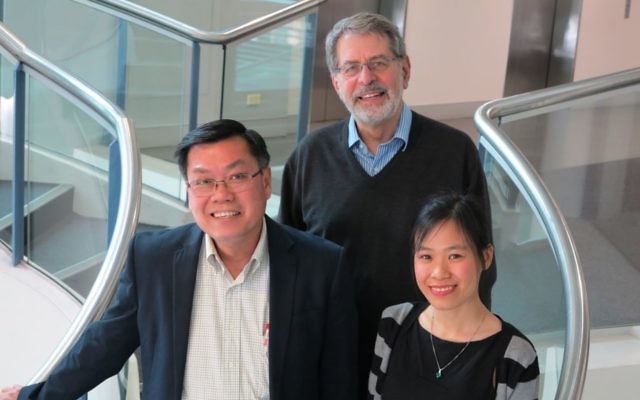Advancing osteoporosis research
It’s been a breakthrough month for Australian research into osteoporosis – and Garvan's Professor John Eisman is in the thick of it.

IT’S been a breakthrough month for Australian research into degenerative bone disease osteoporosis – and Jewish professor John Eisman from Garvan’s Bone Biology Division is in the thick of it.
In a world first, new research has revealed that genetic profiling can help predict whether an individual will break a bone through osteoporosis, a condition doctors often call “the silent thief”.
The findings identified vital clues about osteoporosis that lie within our genes, and arose from Garvan’s Dubbo Osteoporosis Epidemiology Study (DOES), which Eisman established in 1989 and still leads.
It’s become the largest and longest-running study of its kind in osteoporosis anywhere in the world.
The latest research is considered a major step forward for personalised medicine for bone loss, which often occurs in osteoporosis without showing any symptoms.
It looked at 62 different genetic variants in tandem, across 1400 individuals who took part in the DOES project, and found those variations became a powerful predictive tool.
Eisman said the findings, and their clinical relevance, are heartening.
“Each time we improve our understanding of the risk of bone fracture in osteoporosis, we are taking a step towards easier and more straightforward clinical decision-making for Australian GPs,” Eisman said.
“And in turn, towards better outcomes for the 1.2 million Australians living with osteoporosis.”
A new Osteoporosis National Action Plan was announced on World Osteoporosis Day last Thursday, to be guided by an eight-member working group that includes Eisman and professor of medicine at the University of Sydney, Markus Seibel.
Eisman said, through convening with experts and all medical and community stakeholders, the development of an integrated national strategy is “the critical next step to improving care while reducing the health care and individual human costs of osteoporosis”.
In other developments, Garvan recently partnered with Osteoporosis Australia to develop a free online tool called Know Your Bones that helps people to understand their own risk of bone fracture.
Eisman stressed that proper management of the disease could reduce the risk of a subsequent fracture by as much as 80 per cent.
Another new Garvan-led osteoporosis project is due to launch in April 2017 that will create a web-based data portal to allow researchers in a wide range of medical fields to access the valuable data generated by the DOES project.
The project, submitted by Jewish researcher Dr Yvonne Selecki and Dr Mohammad Ali Moni, won the 2016 Ridley Ken Davies Award.
SHANE DESIATNIK

comments